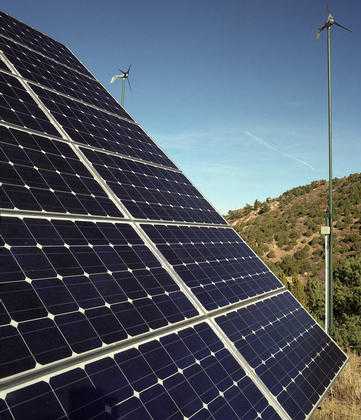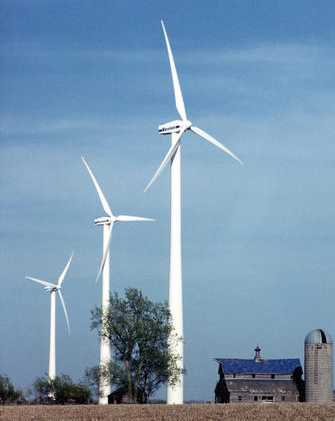on Markets, Policy, Investment, and Future Pathways
by Eric Martinot


|
Renewable Energy Information on Markets, Policy, Investment, and Future Pathways by Eric Martinot |
 |
 |
The green city program was inspired by a report "Creating a Sustainable Adelaide" by Herbert Girardet, an urban ecologist, writer, and documentary maker. He wrote the report based on an 8-week intensive series of meetings, workshops, and debates on sustainability in Adelaide. The report contained 33 recommendations, 30 of which are now being adopted by the state government. Specific policy changes have quickly followed: for example, all new housing built after July 2006 must have a "five star" energy rating; and the state government, which leases more than 25% of the office space in the city, will start to give preference to office buildings with a five-star energy rating when signing new leases from 2006.
The Adelaide green city program has developed within the context of several other planning and strategic agendas. In March 2004, the South Australia state government adopted a strategic ten-year plan for the whole state with 79 targets within set timeframes and 6 objectives, including one on attaining sustainability. The targets related to renewable energy include being a leader on renewable energy within Australia, increasing renewable energy to 15% of total electricity consumption by 2014, and extending an existing Solar Schools program so that at least 250 schools have solar power by 2014. The Adelaide City Council in 2004 adopted a 3-year strategic city management plan with principles and a vision for the city's future, including being a green city and being guided in future development by the principles of environmental sustainability. Finally, the green city program is also part of the Capital City Project, a partnership of the city and the government of South Australia to promote the development of Adelaide as the capital of South Australia.
In addition to developing an implementation strategy for the zero-net-CO2-emissions goals in housing and transport, green city projects underway in Adelaide include:
1. Solar power. Solar panels are being installed on major public buildings, including a museum, art gallery, library, parliament house, and schools. For residential application, smart electricity meters that allow households to sell power back into the grid at peak times are being considered.
2. Commercial building energy efficiency. A "building tune-ups" project is assisting building owners to identify, implement and measure efficiency improvements for energy and water. Ten major commercial office buildings are receiving assistance under the project, together representing 15% of office space in the core downtown market. So far, an audit of each building has been conducted to assign "energy star" ratings from one to five stars. The project's objective is to increase the rating of each building by at least one star. Idenification and assessment of technical measures is underway. The project pays for half the cost of the audit, while building owners pay for the other half and the improvements.
3. Eco housing. A competition to design affordable eco housing was conducted, based on criteria for medium-density inner city housing and environmental sustainability. The winning design achieved a 90% energy saving through solar power and portable evaporative coolers, and a 63% water saving through storage of grey water and rainwater for toilet flushing, landscape watering, and car washing. Simple materials and building methods like earth walling, light-weight timber framing, and corrugated steel reduced the overall cost. Subsequently the city decided to comission construction of the winning design.
4. Others. Energy audits for small businesses, expositions, monthly events, public education, and international speakers.
The green city program is financed in part by a new national government A$75 million fund for solar cities across Australia (Adelaide being the first), in part by the South Australia state government, and in part by the city government.
The Adelaide Green City Program is the first of series of nationwide trials for solar city development in Australia. The primary goal in the Adelaide program is zero net greenhouse gas emissions in buildings by 2012 and in transport by 2020. Another goal is for Adelaide to be recognized internationally as a green city by 2010. The geographical focus of the program is the central city area to concentrate visibility and create a "critical mass" of activity. The program begain in July 2003 with funding for an initial three years.
Page updated December 10, 2004
Photo credits C. Babcock, W. Gretz and
DOE/NREL Photo Information Exchange